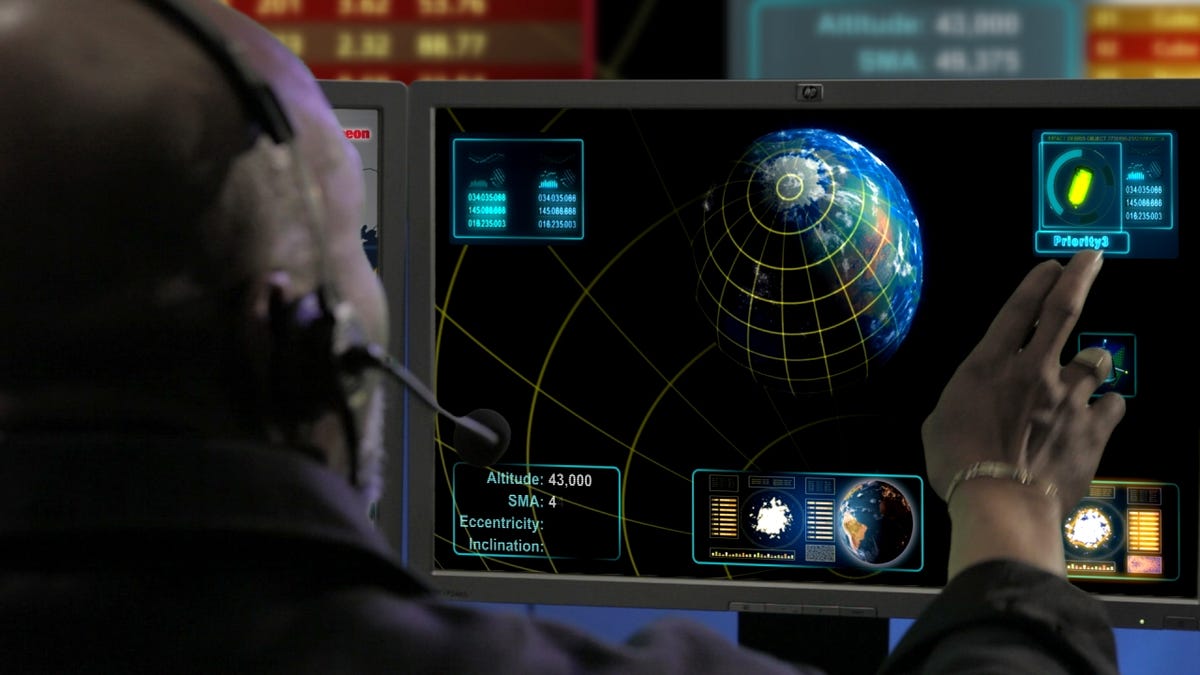Raytheon, Lockheed lock horns for Space Fence contract
The Air Force expects to deploy its $3.5 billion system by 2017, and in the process improve its space debris tracking ten-fold. If it works, as many as 200,000 pieces of junk can be tracked.

Last month, the European Space Agency abruptly declared its Earth observation satellite, Envisat, dead. After more than 10 years of successfully monitoring the planet's natural behaviors from space, the once valuable tool is now considered junk that could endanger active space assets for as much as 150 years.
Situations like this are what has led the U.S. Air Force and partners around the globe to move forward with the construction of a system designed to closely track as many as 200,000 piece of space debris. And now, the Air Force is considering which of two contractors' proposals for a so-called "space fence" it will choose for an initial project that could be deployed by 2017.
But Lockheed's rival for the $3.5 billion Air Force contract, Raytheon, has its own approach, also an S-band array (which was mandated by the Air Force) that it hopes will win the competition.
Both companies are vying to solve the same problem -- current technology is only capable of cataloging and tracking about 20,000 pieces of space debris, and the Air Force is requiring the ability to increase that number to 200,000 or more. As Scott Spence, the director of Raytheon's Space Fence program, put it, not tracking these thousands of objects cluttering low-Earth orbit runs the risk of collisions with active satellites and the creation of even more debris.
As Spence explained it, the Air Force plans to deploy radar systems that are globally dispersed that will create a virtual "fence in space as they rotate around the Earth. They'll see many more small objects [and provide] high accuracy as to where they are."
At the moment, the Air Force is in what Spence called the "Phase A to preliminary design review" for the proposed Space Fence technologies. That phase will last another couple of months, after which either Raytheon or Lockheed Martin will win the contract, and ideally, the space fence will become operational within five years.
Once up and running, the system is designed to provide satellite operators, as well as the International Space Station, with a much larger "space catalog" of known debris, as well as real-time tracking on ten times the junk as is possible today. That additional information could make it possible for satellites or the space station to be moved safely out of the way of debris that would otherwise cause an impact and probable damage.
Spence said that Raytheon is leaning on "pretty well established [and] mature radar technologies" to solve the space debris tracking problem. But because of today's tight budget environment, it is essential that whichever company wins the contract be able to do so affordably, he said.
In addition, Spece explained, whichever technology is chosen must be proven to remain affordable for its entire lifecycle.
Whichever company earns the contract, it is hoped that the winning technology will protect a wide range of communications and GPS satellites, as well as the space station, and spacecraft like the Air Force's mystery flyer, the X-37B. And it's not just the Envisat that poses a danger. In 2010, for example, the space station had to evade an old NASA research satellite, and a widely-publicized incident in 2009 saw an Iridium satellite collide with a Russian Cosmos satellite at 15,000 miles an hour, a crash that left 800 new pieces of space junk. The Air Force can only hope its new system will be able to catalog and track each of those pieces of debris.

